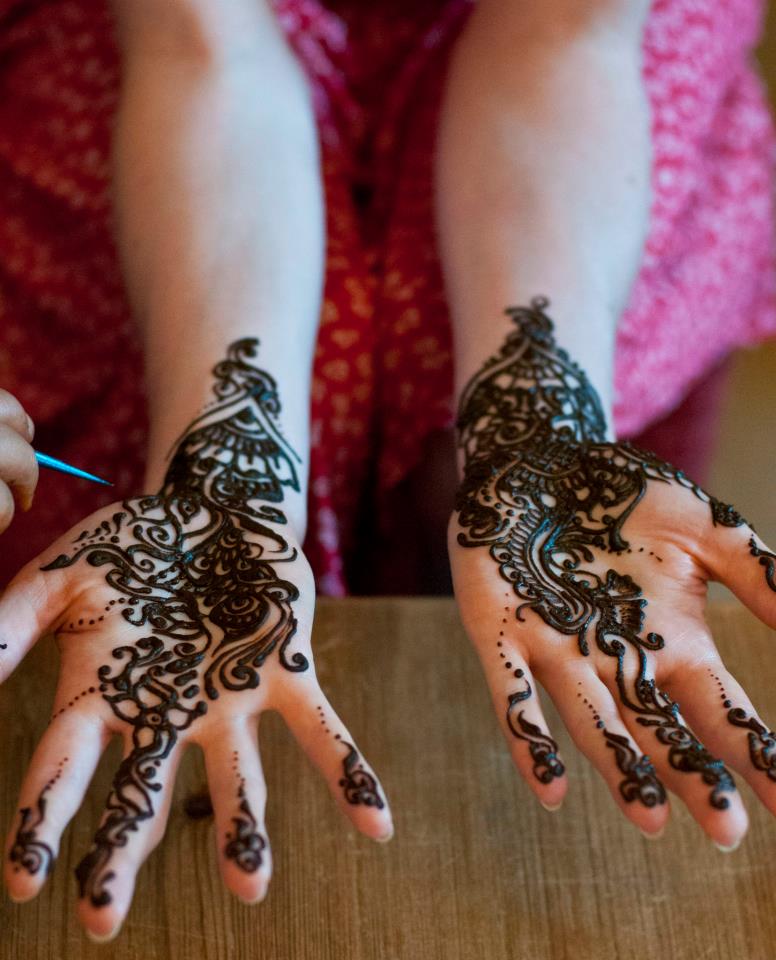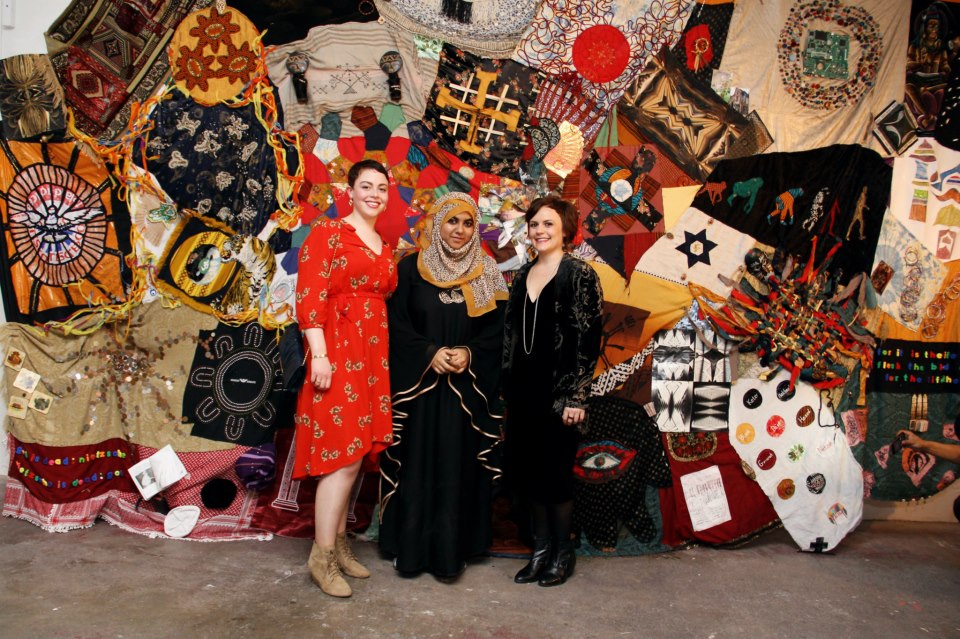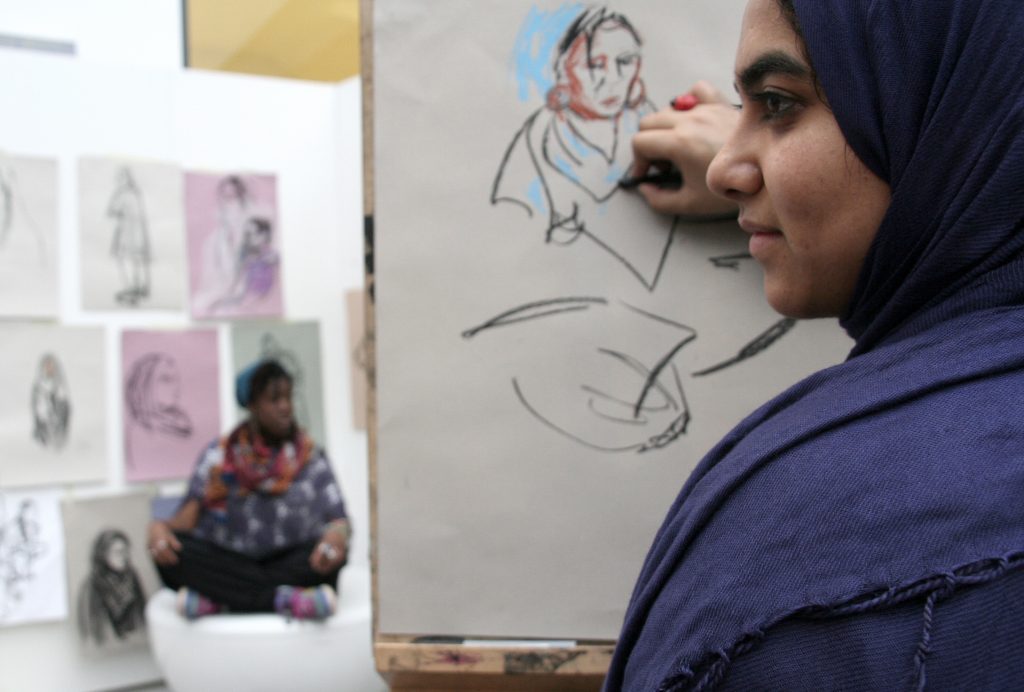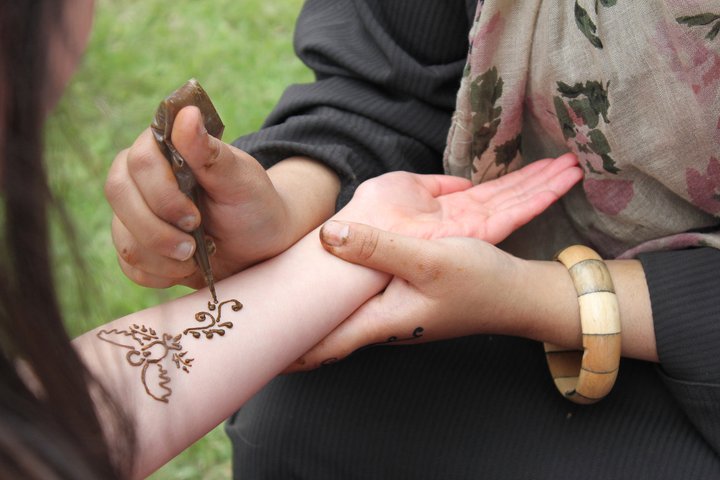Meet Husna Lohiya, a recent Fine Art graduate who resides in London. Since graduating from University, she has continued to work on different art projects, and owns her own Henna business.
I met Husna while I was in college and since that first day, was drawn by her passion to create. I say create, because it didn’t matter what form it took; Husna did it all! Whether it was photography, graphic design or jewelry making, Husna had a flare for it.
When I think back on my college days, our first collaboration where I helped her on a photoshoot for her art project are some of the days I remember as enjoying the most.
For this interview, I met up with her at her pop-up Henna shop in Camden Town, and the conversation that ensued is one that I hope you’ll find inspirational and perhaps help you in pursuing your own dreams no matter how small or big they might be.
YAMI was born out of my personal interactions and observations of young people in social media who are pursuing their dreams fiercely and fearlessly. Though their stories might be different, they hold the same theme- follow your passions and achieve your dreams.
S: Have you always had a passion for art, and knew that you wanted to be an artist?
H: I think I was always creative even as a child, and I don’t remember one particular moment. But I had some amazing art teachers in primary and secondary school, and I enjoyed those classes more than any other, even play time! So that’s probably when I realised that’s what I like to do. I didn’t think I’ll be able to do it as a job, but it just happened.
S: When did you actually start doing henna?
H: My mother used to do henna when I was a child for brides, and I picked it up. If I wasn’t drawing with a henna cone, I was drawing with a pencil. So I’ve always been doing some sort of doodling.
S: When did you think about opening your own shop and making it a business?
H: When I was at secondary school, I wanted to buy a camera, so I thought what can I do? And then I decided I could do henna and get people to pay me 50p or a pound. So I did henna on all my friends and people that asked for it and that’s probably when I started. Later on I did it at fetes and festivals, and also worked for a charity. It was nice making money for charity by doing henna.
S: So you started doing this since secondary school?
H: Yeah. At the time my family used to do fetes in the summer and my dad would make all these little jewelries, and I’d do the henna.
S: Do you still do photography?
H: Yeah, I mean even to run this business, you need photography skills and editing skills because I share my pictures on social media. I’ve been doing photoshoots and having fun with it for a long time so I’m bringing it all together.
I won’t stop doing things that I love, and I think where I’m situated is very beautiful and I just love taking pictures around here.
S: Yeah, Camden is beautiful. I feel like it’s a hidden gem of London. The shops, boutiques..
H: Yeah. It’s like every second there’s something to look at.
S: Why did you decide to open a stall in Camden?
H: When I was in University, I realised that I needed a job, and I didn’t want to work for anyone else first of all, also I didn’t like the idea of being a waitress or doing normal jobs everyone was doing. I just didn’t have any interest in it. So I thought, if I have some skills, I can use them. At first I was doing design work and some logos…
At this point in our conversation, we moved on from the direct question I had asked and talked more about her varying skills and how she’s more than a henna artist. Husna revealed most of her collaborative projects were driven by the need to stay in touch with fellow art friends. She frequently met up with a particular friend who shared her passion for photography and makeup, and they worked on photoshoots together with other people who were interested in their work; as such, her passion for art continued.
She also revealed that although the art world may not particularly lead to riches, she would rather be an artist than work in an office with more pay, doing something she isn’t passionate about.
S: Would you say being an artist and having your work shown in galleries is most likely due to who you know?
H: Hmm, in a certain situation, yes if you want to be a contemporary artist in particular galleries, working in a certain way with certain people.
However, the art world is not that small. So I would like to think I’m doing art even though I don’t know those people and I’m scared of that side of things. But I’m still doing art through a different avenue and somebody else would do something creative in a different way whatever it is. They are not butt kissing anyone. They are doing what they love to do and people are appreciating it.
I remember when I showed my work at the Saatchi gallery which is really famous and very posh, and I remember I had this moment, where I was thinking I don’t want to do this, this is not what I want which was really scary for me because did that mean I don’t want to do art? But it was the whole situation. All these important people were sitting on a round table and the artists were all uncomfortable, not just me. And the whole scenario wasn’t about real people or the public, it was just about them, and they were discussing how much to sell it for. Ah, I just remember I had a moment where I was thinking- ‘I don’t like this, I don’t want to be a part of this.’
But now there’s a trend of a lot of artists who want down to earth work. Work with people and communities to make a difference. Art for change. A real tangible difference.
S: I would also like to know what other projects you’ve been involved in apart from your henna work.
H: Ok, the first big one I did that made me realise the kind of art work I love was with an organisation called Three Faith Forum. They were looking to collaborate with people from different backgrounds and faiths to make a big project together and I worked with a Jewish girl and another girl who doesn’t prescribe to a particular faith but is spiritual. We worked on a big tapestry project; and because I was working at this shop(Henna shop) at the time, I was able to ask people to donate things that meant something to them. Things that had some kind of religious or spiritual connection in any way. We also recorded their stories and had a tapestry of sounds, images and materials weaved together. While we weaved them together, we had a lot of good conversations, learned about each other and went to each others houses, and shared food. It was a very nice process.
Also, the last exhibition for the project was a festival night and a women’s night, and all these themes around it where it opened conversations. People had the chance to break down some of the barriers with their artwork. I still work with the other two girls and we’re now part of a collective group of seven artists.
S: How did you all come together?
H: We all did Fine Art at Middlesex University. I chose to go there because the University is quite open to different kinds of art. I did a module called APC which is like things outside of the typical art arena, so you can work with other people. Some people might want to become teachers, or work with people that are disabled or all these different avenues. I was particularly interested in it but from a different angle and some of the art projects I’ve done have been on that side of the art world. These are things that are more real, down to earth and dealing with actual issues.
S: I remember seeing a project you worked on using spices, what was that all about?
H: For my final project at University, I started a youth club and was working with some women in my community. Some of the skills they had with cooking and working with spices, I wanted to bring them together to have conversations; and at the same time we made spices.
S: How did you make the spices?
H: They are natural substances that we cook with everyday and with that, I made an installation. I made henna designs all along the floor and it was really interesting because most people could smell it before they could see it and they were following the smell. When they got there, they saw different textures and colours on the floor in this strange gallery. It was quite different to the norm because it wasn’t on the walls, it was on the floor.
The first time I showed it, I had my mother’s wedding dress and some objects with some stories, it was a bit like the tapestry. The idea that there’s something more to things than what you see was the story behind it.
However, the second time I showed it, it was just the spices and there was a lot more people involved and it was much bigger.
S: So was this shown in a gallery?
H: Yes, the first time was at my University for my degree show, and the second time was in the Truman gallery in Brick Lane.
S: Do you have any projects coming up that people might be interested in?
H: I’m working on a few projects with the collective I’m in. I can’t say too much yet, but we plan to keep the public frequently updated. It’s all going to be on the website. I’m so sorry I can’t say…. (laughs)
S: Watch this space.. (laughs)
S: What advice would you give to a young creative looking to branch out and start their own venture instead of going through the 9-5 route? Because I feel like what you’re doing take guts.
H: I would say don’t give in. It’s easy to give in when it doesn’t work straight away and you just give up; but things have a way of working out sometimes when you’re doing what you love. And the more you do it, the better you’re going to get. Also, once you’re a professional, you can get away with it.
S: It’s like knowing your worth and believing yourself right?
H: Yeah, you have to and at some point get a thicker skin and value yourself. It takes a long time, and I’m still not there, like I don’t really know my value for what I do. In my situation now, I hear it all the time. People are always telling me that I’m really good, brave..
S: Definitely, I saw it since college already, so I’m not surprised you’ve been able to show your work at galleries.
H: So yeah, you need to get a thicker skin and not give in too easily.
S: So do you still do graphic designing?
H: Yes, some of my customers ask me to design for them.
S: Do you have any long term goal? Like where do you see yourself in 3 years time?
H: I’ll like to live and fund myself with only art. I love to travel, meet different people and live like that. I don’t want to give in and just have a 9-5 job doing anything else.
S: When you decided to take this path, what was the response from your family and friends?
H: My parents never wanted me to do or study art. They wanted me to get married and have children, but in some ways, it’s good that I did art because it’s is something I can do even if I do get married and have children if I’m that kind of person (laughs). I’m not sure if I am or not yet; but I can do this on the side. I can do it from home, and no one is telling me what to do because it’s my own thing.
My dad is glad with the business in henna because it’s something I can rely on rather than the art work that can fade away, like being famous, it can come and go. It’s not consistent. Whereas a business is something I can always fall back on.
S: Do you get paid for showing your artwork in galleries?
H: Actually most of the time, you have to pay them to show your work. But I’ve done mine through commissions, so they pay us or it’s been part of my degree.
S: Anything else you would like the readers to know?
H: Hmm,… do what you love, what you believe in and all that corny stuff (laughs)
It was definitely an interesting conversation, and listening back to the recordings, I can’t help but marvel at what she’s managed to accomplish so far, and I can only imagine many more great things ahead for Husna.
Her drive to use art as a means to communicate with people from different backgrounds in an engaging way is very inspirational and highly commended.
Creatives like Husna is what the world needs more of and she’s a true YAMI indeed!
To contact her and learn more about her work- Email: hus-lo@hotmail.com
Instagram: http://instagram.com/husnahenna
I’d love to leave you with this little wisdom from Karl Marx, the great Sociologist and Philosopher. He described four main ways in which man is alienated in the domain of work due to society’s structure. He enthused that man is alienated from the object he produces, from the process of production, from himself, and from the community of his fellows.
However, I believe that in this regard, the young creatives that are featured in the YAMI series, by steering their own directives in life and work, surpass this alienation of men.
Photo Credit: Courtesy of Husna Lohiya















1 Comment on YAMI: Husna Lohiya, The Henna Genius